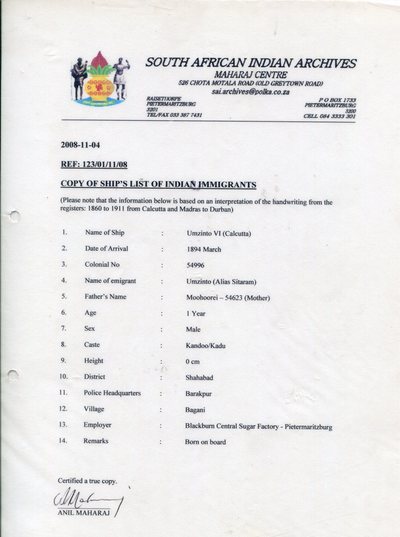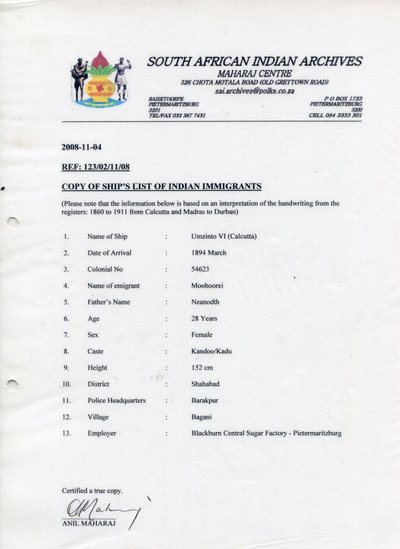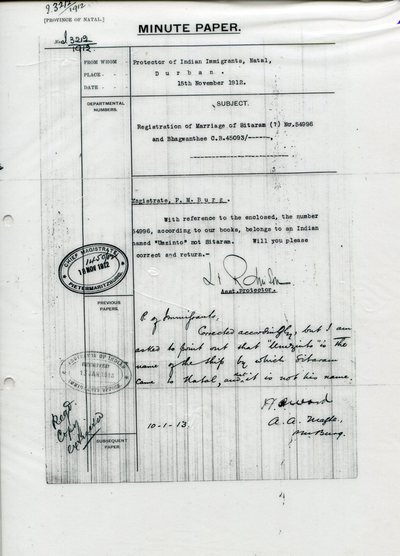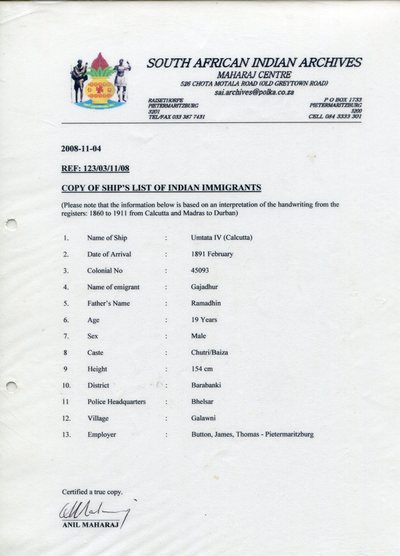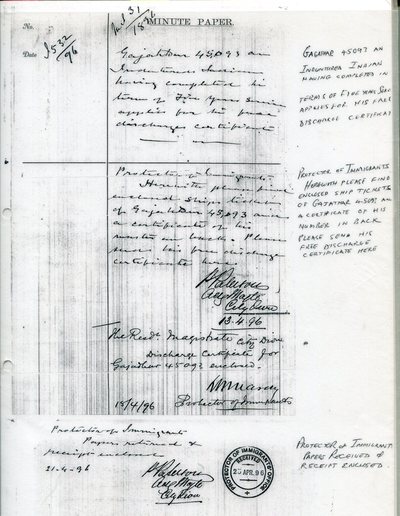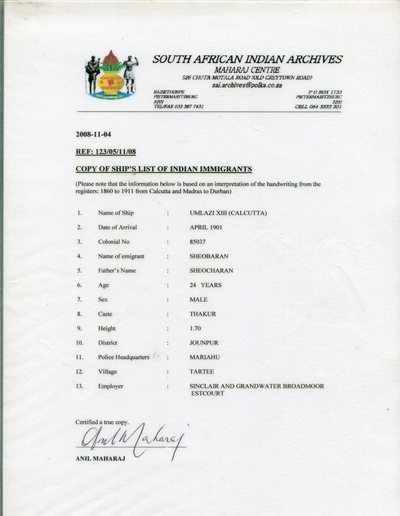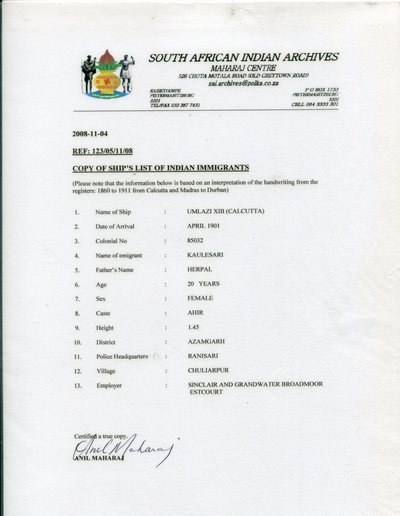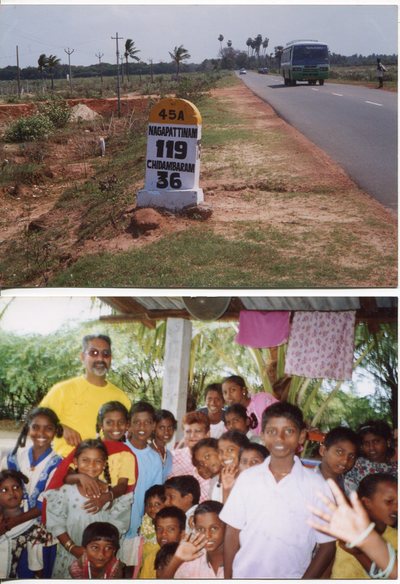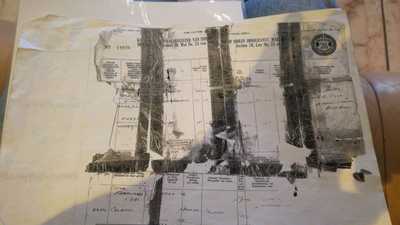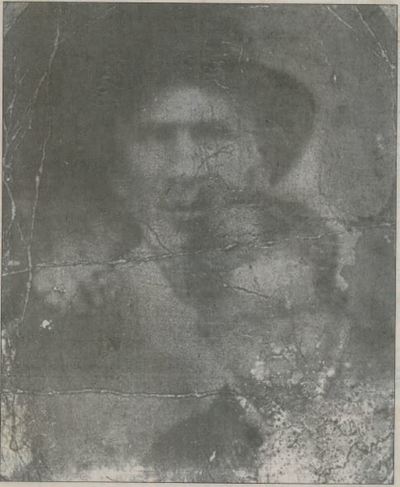Who is Anil Maharaj?
Anil Maharaj is a South African based entrepreneur, socialite and family man. Born and raised in Pietermaritzburg, he started work at the tender age of 14. From a police officer to a car salesman, Maharaj has left his mark in every sphere of his work.
He played an outstanding role in the development of childcare and has adopted many children along the way, to which you can see in our Gallery.
He has dedicated his life to the underprivilaged and has made strides in community upliftment.
With many accolades from India and South Africa under his belt, Maharaj is your go-to man in your journey to retracing your heritage.
He played an outstanding role in the development of childcare and has adopted many children along the way, to which you can see in our Gallery.
He has dedicated his life to the underprivilaged and has made strides in community upliftment.
With many accolades from India and South Africa under his belt, Maharaj is your go-to man in your journey to retracing your heritage.
His Journey
ARMED with just the names of his great-grandparents, and vague recollections of family stories, Anil Maharaj set off on an expedition to India in May, to locate his extended family.
He began his journey of discovery by visiting family members in Pietermaritzburg. “I prodded them for tiny bits of information. I was led to a farm in Greytown, where I was told I would find the ruins of what was once a house,” he said.
In Greytown, Maharaj found the ruined building that his family had lived in. He was also directed to his paternal great-grandfather’s grave site. He discovered his great-grandfather’s name was Sheobaran Sheocharan, and that he had travelled to South Africa as an indentured labourer in 1901, when he was 24 years old.
Having already discovered his maternal great- grandfather’s name — Gajadhur Ramadhin — Maharaj had found all he could of his family in South Africa. The next step was to travel to India to locate his family there.
Ship records gave Maharaj an indication of where he would find his family in India. The Indian Consulate General in South Africa, Anil Sharan, directed Maharaj to the Delhi Archives to glean more information.
“With a letter from the Indian consulate in South Africa, addressed to the Delhi Archives, I was mentally prepared for any setbacks but knew that I would achieve my goal in locating the villages and maybe even the families — those who did not come to South Africa — of my ancestors,” he said.
Despite his fatigue after the long flight from South Africa to Delhi and the excruciating Indian heat, Maharaj described arriving in India as “exhilarating”.
“The thrill of adventure was running through my blood and there was no way anything was going to hold me back,” he said.
He made his way to the Delhi Archives where he was met by the officials who would help him in his discovery. At the archives, he discovered the villages from which his great-grandparents originated.
He was directed to Barabanki, where he was told he would find his maternal family.
“With a substantial amount of information, I made my way to Barabanki. I had a puzzle to piece together and, although it was a mammoth challenge, I knew I would ultimately be rewarded. I reached Barabanki with the name Gajadhur Ramadhin on my lips,” he said.
Gajadhur Ramadhin was 19 years old when he came to South Africa as an indentured labourer. According to the ship’s records, he hailed from a small village in Barabanki called Ganoli.
“My anticipation was rapidly growing as we made our way about 40 km away from Barabanki until we came across a board showing us to the village of Ganoli,” Maharaj said.
“As we entered the village we stopped at a tuckshop on the side of the road and asked a villager on a motorbike if he knew the Ramadhin family from around there. He nodded in affirmation and told us to follow him,” Maharaj added.
Just 500 metres away from the tuckshop, Maharaj was shown the Ramdhins’ house.
“I nearly tripped over my own feet in excitement,” Maharaj said.
The family were excited to hear that Maharaj was from South Africa. Members of the family told him, through a translator, that they too had family in South Africa — a Mr G. S. Maharaj in Pietermaritzburg.
Maharaj was thrilled to tell his long-lost family that the very G. S. Maharaj from Pietermaritzburg was his great-grandmother’s brother.
“The reception I received was warm and accommodating, to say the least. These wonderfully humble people were my own flesh and blood,” Maharaj said.
Having found his maternal family, Maharaj set out to find his father’s family.
An eight-hour train ride took him to Mariahu.
“Once in Mariahu, we searched for the village called Tartee. It was then that the real search for the home of my family began,” he said.
In Tartee, suspicions about the South African visitor ran high. Maharaj was asked to disclose his caste and was quizzed on whether he intended to reclaim his family’s land.
“Once I had assured the officials that I had come in search of my ancestors, and not for any monetary gain, I was shown to people who had acquaintances with the Sheobaran family,” he said. From there, he was able to find his family home.
“Upon arrival at the home of the family of my great-grandfather, I was greeted with a warmness that reminded me of the old days when people were so elated to have you in their home,” he said.
“Their traditions are very similar to those that we practice in South Africa. My heart swelled with pride and respect for our people who, from such humble beginnings, took a brave step into the unknown,” he said.
“There are no words to describe my state of mind, other than to say that I feel as if I have graduated with a doctorate from the University of Life,” Maharaj said of his experience.
He began his journey of discovery by visiting family members in Pietermaritzburg. “I prodded them for tiny bits of information. I was led to a farm in Greytown, where I was told I would find the ruins of what was once a house,” he said.
In Greytown, Maharaj found the ruined building that his family had lived in. He was also directed to his paternal great-grandfather’s grave site. He discovered his great-grandfather’s name was Sheobaran Sheocharan, and that he had travelled to South Africa as an indentured labourer in 1901, when he was 24 years old.
Having already discovered his maternal great- grandfather’s name — Gajadhur Ramadhin — Maharaj had found all he could of his family in South Africa. The next step was to travel to India to locate his family there.
Ship records gave Maharaj an indication of where he would find his family in India. The Indian Consulate General in South Africa, Anil Sharan, directed Maharaj to the Delhi Archives to glean more information.
“With a letter from the Indian consulate in South Africa, addressed to the Delhi Archives, I was mentally prepared for any setbacks but knew that I would achieve my goal in locating the villages and maybe even the families — those who did not come to South Africa — of my ancestors,” he said.
Despite his fatigue after the long flight from South Africa to Delhi and the excruciating Indian heat, Maharaj described arriving in India as “exhilarating”.
“The thrill of adventure was running through my blood and there was no way anything was going to hold me back,” he said.
He made his way to the Delhi Archives where he was met by the officials who would help him in his discovery. At the archives, he discovered the villages from which his great-grandparents originated.
He was directed to Barabanki, where he was told he would find his maternal family.
“With a substantial amount of information, I made my way to Barabanki. I had a puzzle to piece together and, although it was a mammoth challenge, I knew I would ultimately be rewarded. I reached Barabanki with the name Gajadhur Ramadhin on my lips,” he said.
Gajadhur Ramadhin was 19 years old when he came to South Africa as an indentured labourer. According to the ship’s records, he hailed from a small village in Barabanki called Ganoli.
“My anticipation was rapidly growing as we made our way about 40 km away from Barabanki until we came across a board showing us to the village of Ganoli,” Maharaj said.
“As we entered the village we stopped at a tuckshop on the side of the road and asked a villager on a motorbike if he knew the Ramadhin family from around there. He nodded in affirmation and told us to follow him,” Maharaj added.
Just 500 metres away from the tuckshop, Maharaj was shown the Ramdhins’ house.
“I nearly tripped over my own feet in excitement,” Maharaj said.
The family were excited to hear that Maharaj was from South Africa. Members of the family told him, through a translator, that they too had family in South Africa — a Mr G. S. Maharaj in Pietermaritzburg.
Maharaj was thrilled to tell his long-lost family that the very G. S. Maharaj from Pietermaritzburg was his great-grandmother’s brother.
“The reception I received was warm and accommodating, to say the least. These wonderfully humble people were my own flesh and blood,” Maharaj said.
Having found his maternal family, Maharaj set out to find his father’s family.
An eight-hour train ride took him to Mariahu.
“Once in Mariahu, we searched for the village called Tartee. It was then that the real search for the home of my family began,” he said.
In Tartee, suspicions about the South African visitor ran high. Maharaj was asked to disclose his caste and was quizzed on whether he intended to reclaim his family’s land.
“Once I had assured the officials that I had come in search of my ancestors, and not for any monetary gain, I was shown to people who had acquaintances with the Sheobaran family,” he said. From there, he was able to find his family home.
“Upon arrival at the home of the family of my great-grandfather, I was greeted with a warmness that reminded me of the old days when people were so elated to have you in their home,” he said.
“Their traditions are very similar to those that we practice in South Africa. My heart swelled with pride and respect for our people who, from such humble beginnings, took a brave step into the unknown,” he said.
“There are no words to describe my state of mind, other than to say that I feel as if I have graduated with a doctorate from the University of Life,” Maharaj said of his experience.
